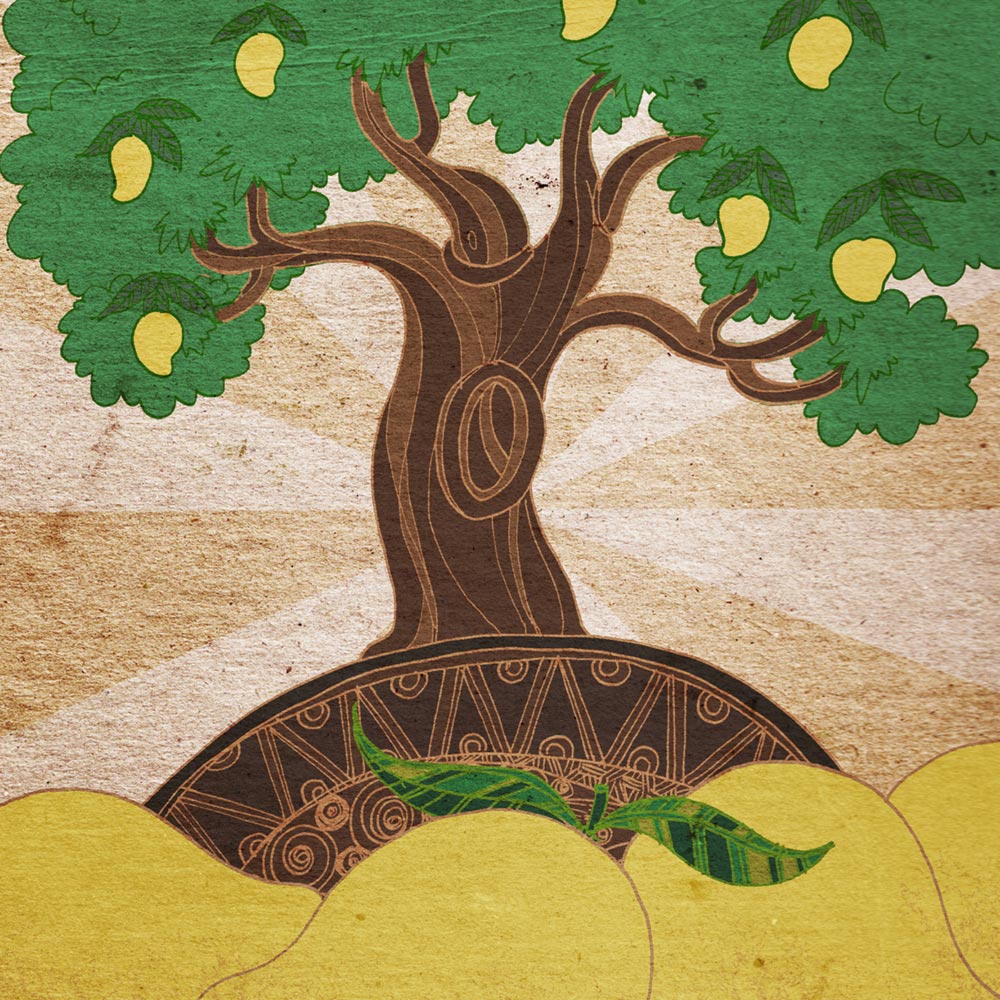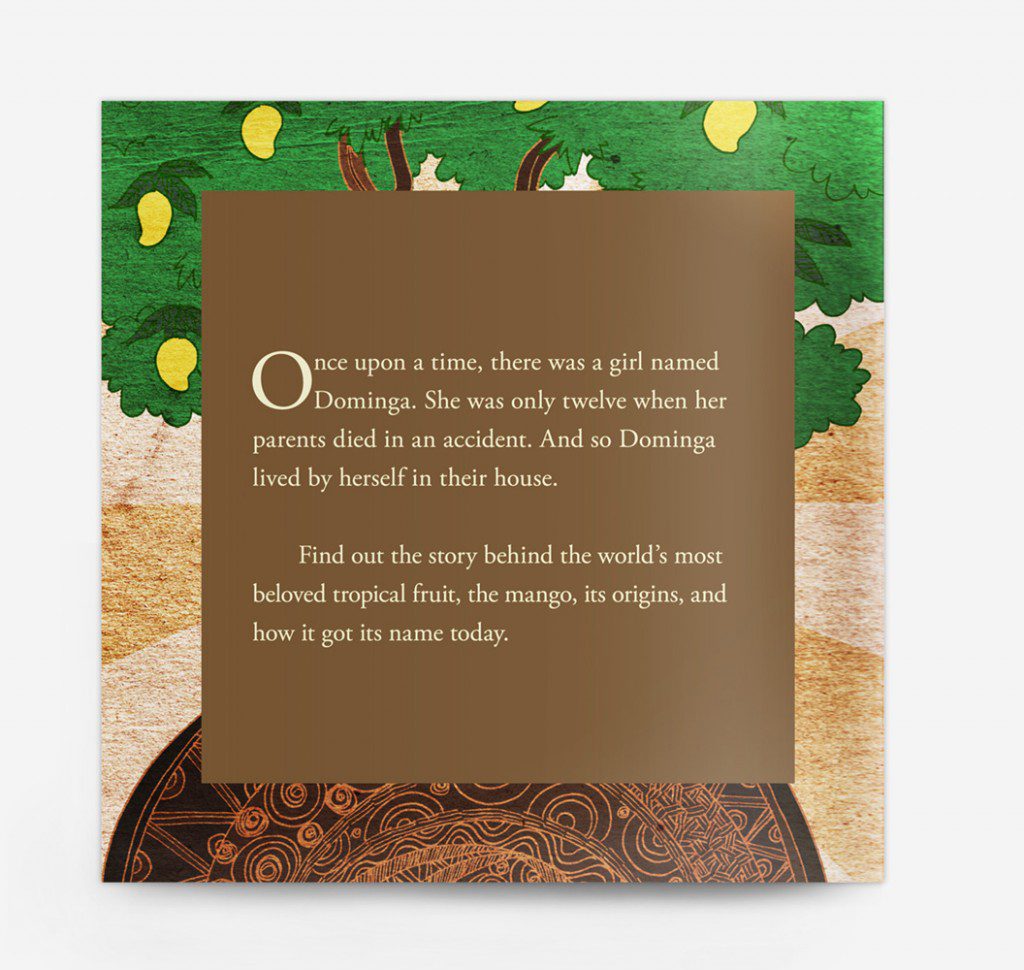“Once upon a time, in a small town of Aman there lived a girl named Dominga. She was only twelve when her parents died in an accident. And so Dominga lived by herself in their house.”
Find out the story behind the world’s most beloved tropical fruit, the mango, its origins, and how it got its name today.
Once upon a time, in a small town of Aman there lived a girl named Dominga. She was only twelve when her parents died in an accident. And so Dominga lived by herself in their house. Mingga, as her friends called her, was kind and helpful.
One day, an old woman approached her. “I am not feeling well,” the old woman said. “I need someone to help me at home.”
“Don’t worry,” Mingga replied. “I will help you do the household chores.”
“Thank you, Mingga. You are so kind.” To help the old woman, Mingga did the household chores until the old woman got well.
“Thank you very much, Mingga,” said Grandma Anita. “You did not leave me when I was sick. You heart is really pure.” Mingga assured her, “It’s nothing, Grandma Anita. I am willing to help you anytime.”
One day, Mingga got sick. And her condition got worse. Eventually, Mingga passed away. Everyone in their town mourned. “Mingga has now passed. But I believe her kind heart will never die.”
“Let us take her heart and keep it as a remembrance of her.” They took Mingga’s heart and planted it in the garden. After several days, a plant grew. The people took very good care of the plant for they believed that the plant was Mingga. When the tree bore fruits, the people decided to call the fruit, Mingga. Over time, the fruit’s name has evolved into what we know today as Mango.
Translated below into Filipino (Tagalog)
Noong unang panahon, sa maliit na baryo ng Aman may isang batang babaeng nagngangalang Dominga. Labing dalawang taong gulang pa lang siya nang siya’y naulila sa magulang. Kaya si Dominga ay namumuhay ng mag-isa sa kanilang bahay. Si Dominga, o mas kilala sa tawag na Mingga, ay matulungin.
Isang araw, lumapit sa kanya ang isang matandang babae. “Haay naku. Ang sama ng aking pakiramdam,” sabi ng matanda. “Kailangan ko ng kasama sa bahay.”
“Aahh, ganun po ba?” sagot ni Mingga. “Huwag po kayong mag-alala. Habang kayo ay may sakit, tutulungan ko po kayo sa gawaing bahay.”
“Naku, salamat sa iyo, Mingga. Napakabuti mo.” Para matulungan ang matanda, masinop na ginawa ni Mingga ang mga gawaing bahay hanggang sa gumaling ang matanda.
“Malaking pasasalamat sa iyo, Minnga” sabi ni Lola Anita. “Hindi mo ako iniwan noong ako ay nagkasakit. Napakabuti ng iyong puso.” Sagot ni Mingga, “Wala pong anuman, Lola Anita. Handa po akong tumulong sa inyo anumang oras.”
lsang araw, si Mingga naman ang nagkasakit, at naging malubha ang kalagayan niya. Hindi nagtagal, pumanaw si Mingga. Ang mga tao sa kanilang bayan ay nagluksa. “Pumanaw na nga si Mingga. Pero naniniwala akong ang mabuting puso niya ay hindi kailan man mamamatay.”
“Kupkupin natin at itago ang kanyang puso nang ito’y magsilbing alaala niya sa atin.”
Kinuha nila ang puso ni Mingga at itinanim ito sa bakuran.” Pagkalipas ng ilang araw, tumubo ang isang halaman.
Ang halamang ito ay inalagaang mabuti ng mga taong bayan ng Aman sapagkat naniniwala silang ang halamang iyon ay si Mingga. Nang namunga ito, nagkaisa ang mga taong tawagin itong Mingga. Sa paglipas ng panahon, ang pangalan ng prutas ay naging Mangga, tulad ng alam natin ngayon.
Legend of the Mango (Alamat ng Mangga) is an illustrated storybook for children narrating the origins of the famed local fruit in the Philippines. This book is part of the Mangoholic series of prints celebrating the value of the Philippine mango to the community, the country’s agricultural industry, its culture and the arts.
















